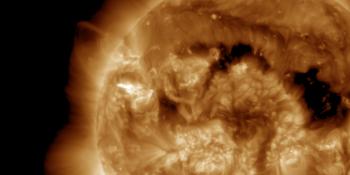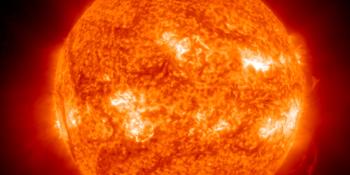Przeglądasz Archiwum z niedziela, 31 maja 2020
Wybierz potrzebny element z archiwum
Have we passed solar minimum?
The recent M-class solar flare from a sunspot region that belongs to Solar Cycle 25 was a wake up call for everyone who keeps an eye on the weather in space. Who would have thought that we would see an M-class solar flare while we are so close to solar minimum? Not many of us that's for sure. It raises yet again the question... When is solar minimum, or when was solar minimum? Could we have passed solar minimum? We have seen a couple of Solar Cycle 25 sunspot regions during the past few weeks and this M-class solar flare was another sign that we might have passed solar minimum already? Is Solar Cycle 25 really starting to gain traction? In this news item we will take a look at the evidence and present you with the data we need to draw a preliminary conclusion.
Najnowsze wiadomości
Najnowsze wiadomości z forum
Wesprzyj SpaceWeatherLive.com!
Wielu ludzi odwiedza SpaceWeatherLive aby śledzić aktywność słoneczną lub sprawdzić czy jest szansa na zaobserwowanie zorzy polarnej. Niestety, większy ruch na stronie oznacza większe koszty utrzymania serwera. Dlatego, jeśli jesteś zadowolony ze strony SpaceWeatherLive, zachęcamy do wspierania nas finansowo. Dzięki temu będziemy mogli utrzymać naszą stronę.

Fakty na temat pogody kosmicznej
| Ostatnie rozbłyski klasy X | 2025/01/04 | X1.85 |
| Ostatnie rozbłyski klasy M | 2025/01/09 | M1.1 |
| Ostatnia burza geomagnetyczna | 2025/01/04 | Kp5 (G1) |
| Dni bez plam słonecznych | |
|---|---|
| Ostatni dzień bez skazy | 2022/06/08 |
| Średnia miesięczna liczba plam słonecznych | |
|---|---|
| grudnia 2024 | 154.5 +2 |
| stycznia 2025 | 144.5 -10 |
| Ostatnie 30 dni | 151.1 +32.8 |


